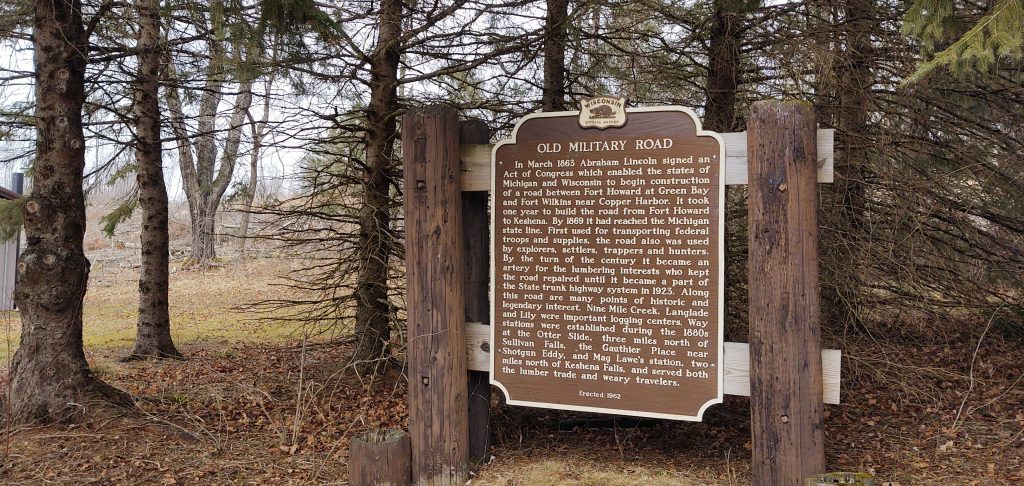In Rural Wisconsin, It’s Time to Build for the Future
When my parents were in assisted living in Southwest Florida, I became friends with one of their young caregivers. This urban twenty-something was curious about what it’s like to live where it snows as much as it does in rural northern Wisconsin. Like many policymakers, she really had no idea what it’s like to live in an area that doesn’t even have cable TV. I never got around to telling her about wells and septic systems. But I made sure she learned you never choose “shortest route” on your GPS when you’re out in the sticks.
Out here, what looks like a road on Google Maps can fool you. A U.S. Forest Service road near my house (really a snowmobile trail) comes up as a route of travel to a nearby lake. It’s doable part of the year, maybe, with four-wheel drive and high clearance. It’s also just about impossible to reach a cell tower if you get stuck and need to call for a tow.
There’s much about the infrastructure here that seems impossible in the 21st century, until you meet it face to face. In 2009, we still had dial-up internet through the phone line. While researching ways to get faster service, I called our phone company to ask about DSL. After looking at our location on the map, the representative said, “Oh, hon, that area won’t be getting DSL until it’s obsolete everywhere else.”
Managing in a Remote Zone
Last year I worked the census in an area studded with vacation homes filled with people who bugged out of urban neighborhoods to face the pandemic on a lake or in the woods. One lady flagged me down for advice I couldn’t give on where she might go to log into a Zoom meeting. I saw people with cell phones doing business from the ends of driveways — often the only place to get a signal.
We appreciate the economic contributions those non-resident property owners make in an area like this. But I have limited sympathy for their complaints about property taxes and infrastructure deficits at their second home. Many don’t realize that cellular data becomes slower and more unreliable for everyone when they’re Up North. On weekends when summer cottages are filled, demand for bandwidth is so high that I try to finish web-based tasks for my business by 7 a.m.
People are drawn to this area by the same things that create infrastructure challenges. The Wolf River runs through Eastern Langlade County. There are two state highway bridges across the Wolf, and four more county road bridges. The river corridor is lined with state lands. The Chequamegon-Nicolet National Forest lies to the east. To the south is the Menominee Indian Reservation. Between tribal lands, river crossings and a whole lot of forest, many places are just plain hard to get to.
Just over Langlade County’s southern border, the northern part of the Menominee Reservation has no power or telephone lines. Just east of here in the National Forest there’s a dead zone where different utilities’ service areas don’t quite meet up. Just north of here, there’s another dead zone where, once again, utilities’ territories stop short of each other. We’re like a Venn diagram without intersections. (Langlade County is classified as Working Class County in the American Communities Project.)
The Evolution of Major Roads

In an undated typewritten memoir, the late Cap Buettner Sr. shared stories of growing up in this area. When he was about six years old (probably around 1919), he made a trip with his father on what is now the state highway that runs past my house. It was a 40-mile journey through the Menominee Indian Reservation to Shawano to buy a horse. To reach that center of commerce by mid-afternoon, Cap and his dad left at 3 a.m. in a buggy pulled by one horse. With the second horse in harness they made better time on the trip home.
That route was known as the Military Road before it came to be called State Highway 55. In 1863, Congress funded construction of a road to connect Green Bay, Wisconsin; and Copper Harbor, Michigan. Like the interstate highway system a century later, the Military Road was meant in part to enable rapid movement of troops for civil defense. Buettner wrote that the government contracted to have the road cut 25 feet wide. They laid logs perpendicular to the roadway in swampy areas, making what is commonly called a corduroy road, to make it usable for horses and wagons hauling supplies.
According to historian Heather Cox Richardson, President Abraham Lincoln believed government should develop the country’s infrastructure. Republican legislators supported imposing the first national taxes — including an income tax — to help fund projects that would benefit ordinary people. It's the same social contract that has spurred dam projects, the interstate highway system, and rural electrification.
The Military Road is not as rough as a corduroy road now — mostly — but it's still narrow and curvy. And it's still an important route for tourists, cottage folk, people who commute to jobs, mail delivery, movement of agricultural equipment and products, transport of goods and supplies, and people who like to ride motorcycles through the woods on sunny days.
Branching off from that state highway are other state and county highways and township roads. In Wisconsin, secondary roads are pretty darn nice compared to the dusty gravel I grew up on in Indiana. Here, paving is a legacy from the time when small farms were spread out all over the Dairy State. Milk trucks had to get through in every kind of weather to move that perishable product to market. But those small dairies are fading from the landscape faster than Wisconsin's Progressive political tradition. You can kick the can of deferred maintenance down a rural road just so long before that pavement crumbles. Nobody wants to pay the tab but that doesn't stop them asking, "Why can't they fix my road?"
Reimagining Infrastructure
Infrastructure bills didn't make much headway through Congress in the last administration. I'd like to feel more optimistic about the current administration's ability to garner bipartisan support for an infrastructure bill that could truly meet the needs of rural areas. But I fear that won't happen if opponents continue to claim that "infrastructure" means roads and bridges and nothing more.
Not that our roads and bridges don't need some attention. Wisconsin's roads are becoming like a school assignment that would be graded A+ if only it were completed on time. Not getting things done in a timely fashion knocks down the grade. The American Society of Civil Engineers assesses the condition and performance of 17 major infrastructure categories every four years. In their 2021 report, Wisconsin's overall grade was a solid C. For roads alone it was D+.
In most rural areas we already foot the bill for what would be public utilities in more populated areas — things like water wells and septic systems. If, for example, access to high-speed internet is eliminated from road-and-bridge-centric infrastructure policy, it will only be available in rural areas to those willing and able to pay premium prices for mediocre service. Even then you may not get service where there aren't enough addresses in close proximity to make installation profitable for a provider.
When a natural gas pipeline went through this area, it stopped short of my address because there weren't enough potential customers to make further progress profitable. Same story on fiber optic for high-speed internet that was installed with grant money to a church camp to the north: With so few homes between where it turned north and the reservation to the south, it won't come my way until some infrastructure program helps pick up the tab.
We've been hearing for the past 10 years that a rural broadband initiative will come to our area soon. I think they programmed "shortest route" into their GPS and got stuck on a forest road because it sure hasn't arrived.
Maybe that's not the worst thing if it inspires new and creative approaches to infrastructure challenges that can't be solved with old ideas about what infrastructure means. For example, another county in northern Wisconsin is testing a system for delivering high-speed internet with tethered drone platforms instead of traditional tower-based equipment. "The whole concept is we can now do dynamic networks as needed," said Wisconsin TeleLift CEO Scott Williams. "We don't replace infrastructure. We're replacing the mindset that you have to have permanent infrastructure."
I can't quite wrap my head around how that mindset might translate to roads, bridges, and other infrastructure. But I appreciate that elements of President Biden's proposed plan try to reimagine how we might meet more than just our most immediate needs. Our future could be as different from life now as now is from the time when Cap Buettner Sr. and his dad took that buggy trip down the Military Road to buy a horse. To me, it seems like high time we come together again and commit to building for the common good — including in rural areas.
 Donna Kallner is a folk artist and writer from rural northern Wisconsin.
Donna Kallner is a folk artist and writer from rural northern Wisconsin.
